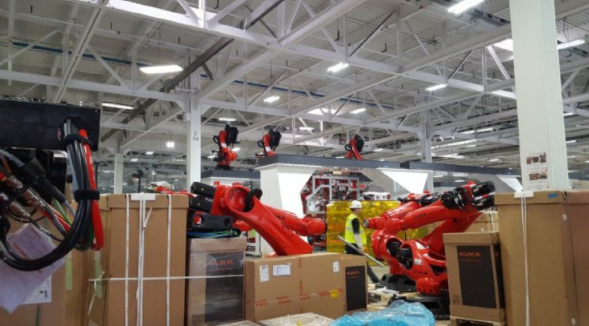Although unmanned factories are regarded as the ultimate in intelligent manufacturing, the flag has been screaming for several years, and the truly unmanned factories are still uncommon. Most of the current market is more inclined to reduce labor ratio and “close to†the size of unmanned factories. The way to run. The vision of fully automated production has not been carried out smoothly as expected, and even in response to future manufacturing trends, the demand for unmanned factories in the market is likely to be significantly reduced, and replaced by a human-machine mode that allows the production line to meet elastic demand.
Can an unmanned factory not be feasible? In the recent troubles of Tesla, it is conceivable that the key technology needed to build a fully automated unmanned factory is much more complicated than imagined. The ultimate goal of an unmanned factory is to remove humans from production online, let machines replace humans to reduce labor costs and improve production efficiency and production quality, but the premise of realizing these visions is that manufacturers must ensure that machines can do better than humans. better.

Obviously, the intelligence of robots cannot reach the same level as humans. First of all, there is a lack of complete sensing ability in terms of functionality. Although in recent years, many manufacturers have integrated robotic vision and force sensing to enable robots to achieve more precise "eye coordination", but the industry's most critical technology should be observed. It lies in tactile sensing.
The original Seiki machine, which was independently produced by ITRI, has been focusing on the development of tactile sensing since 2010. Lu Yuanli, the general manager of the original fine machine, said that the tactile sensing allows the robot to more intelligently identify the material of the object via the "feel", so that the arm can adjust the gripping force to avoid material damage. The ability to recognize.
On the other hand, robots lack the ability of humans to adapt to the environment. The reason why human beings can surpass other species to survive in the evolution of different eras is because human beings can maintain flexible resilience in many unpredictable changes, and speculate on what might happen next through observation and rule of thumb.
Most of the robots currently in production are flexible, and there is not enough artificial intelligence technology to support them. Chen Songying, technical director of Siemens Software Greater China, said that "elasticity" is the key element of the current lack of robots.
When unpredictable changes in the process or when the plant begins to produce new products, the manufacturer must redesign the production line, configure the machine equipment, or re-tune the robot and look for different solutions. Although unmanned production lines can effectively reduce labor costs and increase working hours.
Conversely, the more complex the production line is, the more likely it is to produce unpredictable error conditions. The robot will continue to increase the input cost before the robot has sufficient resilience.
Masaru Takeuchi, general manager of the Omron Intelligent Systems R&D Center, said that in fact, importing robots requires more manpower, time and money than imagined, and engineering costs can reach 3 to 8 times the cost of hardware, and sometimes even 20 times. Robots also need maintenance and maintenance. Under the total cost, they are costly and inflexible, and the benefits tend to decrease as the product cycle shrinks.
This is precisely inconsistent with the mainstream manufacturing trends of the future. Chen Songying believes that if the demand of manufacturers is mixed production, or a small variety of flexible manufacturing models, basically the industry will not choose to produce 100% automation through unmanned factories, "because it will be more troublesome. More labor and manufacturing costs will be higher."
Therefore, the industry estimates that a fully automated production pattern may be more suitable for use in highly standardized manufacturing lines with lower production frequency and lower frequency. Danish collaborative robot manufacturer Universal Robots (UR) believes that unmanned factories are usually only used in very large, high-cost operating modes, such as large-scale assembly lines such as automobile manufacturing.
In the past, automobile manufacturing was the best representative of automated production, but its manufacturing pattern is slowly changing. For example, Mercedes-Benz is making more personalized cars to meet market demand, and is now reducing the automation of final assembly to increase production flexibility. The focus is not on increasing the proportion of production machines, but on How to improve the flexibility and work efficiency between machines and humans.
Therefore, although automobile manufacturing has entered a stage of high automation, large automobile manufacturers have chosen to incorporate cooperative robots that can work together with humans in the same space into the production line, while maintaining the flexible operation of human beings at the manufacturing site. In addition to the work value that human beings are given, on the other hand, under the proportion of increasing robots, let the machine replace human beings to deal with dangerous, dirty, heavy tasks, and make people work together in the "everything" situation. Under the maximum benefit.
Sfp Fiber Adapter,St Fiber Coupler,St Fiber To Ethernet Converter,Sfp To Sc Adapter
Ningbo Fengwei Communication Technology Co., Ltd , https://www.fengweicommunication.com